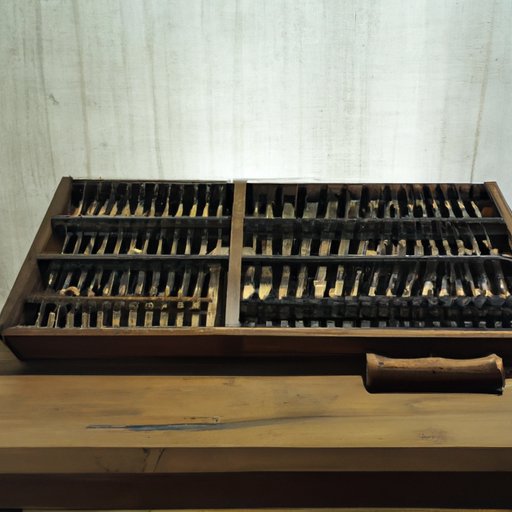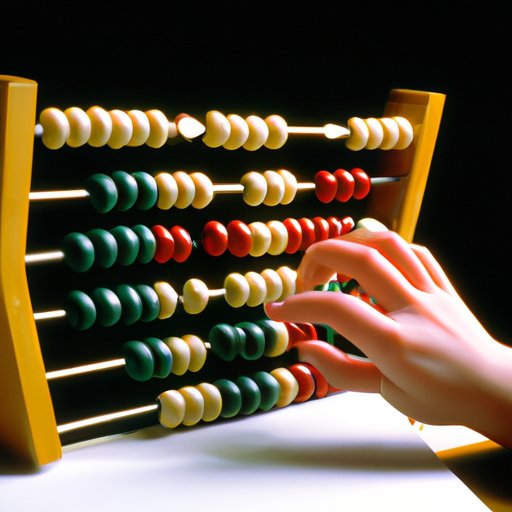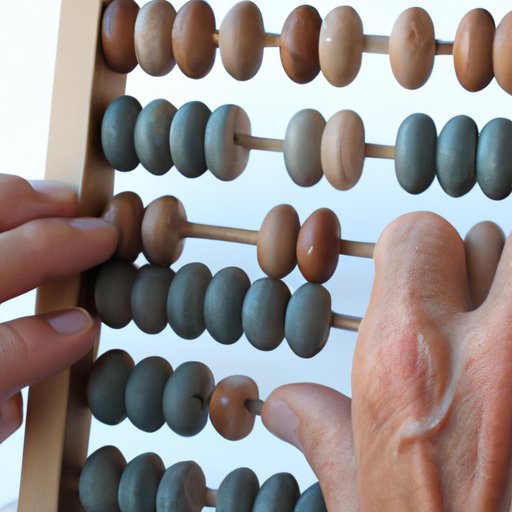Introduction
An abacus is an ancient tool used for counting and mathematical calculations. It is composed of several rows of beads that are strung along a series of rods. The abacus dates back to ancient times and was once the main tool used for performing calculations. Today, it is still used as a teaching aid in many parts of the world.

Overview of the History of the Abacus
The earliest known example of an abacus dates back to the 3rd century BC. It was originally developed by the Babylonians, who used it to perform basic arithmetic operations such as addition, subtraction, multiplication, and division. Over time, the abacus spread to other parts of the world, including China, India, and Japan. In each culture, the abacus was modified to suit their particular needs. For example, the Chinese abacus features a different number of beads depending on the type of calculation being performed.
Benefits of Learning to Use an Abacus
Learning to use an abacus offers numerous benefits. Some of the most notable include:
Improved Mental Arithmetic
Using an abacus can help improve your mental arithmetic skills. By using the abacus to solve problems, you can train your brain to do mathematical calculations quickly and accurately. With practice, you can learn to do mental calculations without having to rely on the physical abacus.
Enhanced Problem Solving Skills
Using an abacus can also help enhance your problem solving skills. As you learn how to use the abacus, you will gain a better understanding of how numbers work together and how they relate to each other. This can help you become more adept at solving complex problems.
Increased Focus and Concentration
Using an abacus requires you to focus intently on the task at hand. This can help improve your focus and concentration, which can be beneficial in other areas of life. As you become more comfortable with the abacus, you will be able to stay focused on the task longer and complete calculations quicker.

An Introduction to Abacus Mathematics
Abacus mathematics is a system of calculation that uses the abacus to solve problems. It is based on the principle of place value, which states that the position of a digit in a number determines its value. Using this principle, it is possible to do calculations with the abacus without having to use any additional tools.
Basic Principles of Abacus Mathematics
In abacus mathematics, each bead represents a certain value. The upper beads represent the units, tens, hundreds, and so on, while the lower beads represent the fractions. To calculate a number, you move the beads up or down according to the value of the number. For example, to calculate the number twelve, you would move one of the upper beads up two places and one of the lower beads up two places.
Demonstrating the Abacus in Action
To demonstrate how the abacus works, let’s look at the following example. To calculate the sum of 12 and 5, you would move one of the upper beads up two places and one of the lower beads up two places (to represent 12) and then move one of the upper beads up one place (to represent 5). The result would be 17, which is represented by the number of beads moved up.

Examining the Components of an Abacus
An abacus consists of several components. Let’s take a closer look at the components of an abacus and how they work together.
Description of the Beads
The beads are the most important part of an abacus. They are arranged in rows and columns, with each column representing a specific value. The upper beads represent the units, tens, hundreds, and so on, while the lower beads represent the fractions. To calculate a number, you move the beads up or down according to the value of the number.
Exploring the Different Types of Abacuses
There are several different types of abacuses. The most common type is the soroban, which is a Japanese abacus. Other types of abacuses include the Chinese suanpan, the Russian schoty, and the Indian ghatam. Each of these abacuses has its own unique features and design.
Conclusion
The abacus is an ancient tool used for counting and mathematical calculations. It has been around for centuries and is still used today as a teaching aid. Learning to use an abacus offers numerous benefits, such as improved mental arithmetic, enhanced problem solving skills, and increased focus and concentration. It is composed of several components, including beads and rods, and there are several different types of abacuses. With practice and dedication, anyone can learn to use an abacus.
In conclusion, the abacus is an invaluable tool for learning mathematics. By mastering the basics of abacus mathematics, you can unlock a powerful new way of thinking about numbers and calculations. With practice and dedication, you can become an expert in abacus mathematics and reap the many benefits it has to offer.
(Note: Is this article not meeting your expectations? Do you have knowledge or insights to share? Unlock new opportunities and expand your reach by joining our authors team. Click Registration to join us and share your expertise with our readers.)
